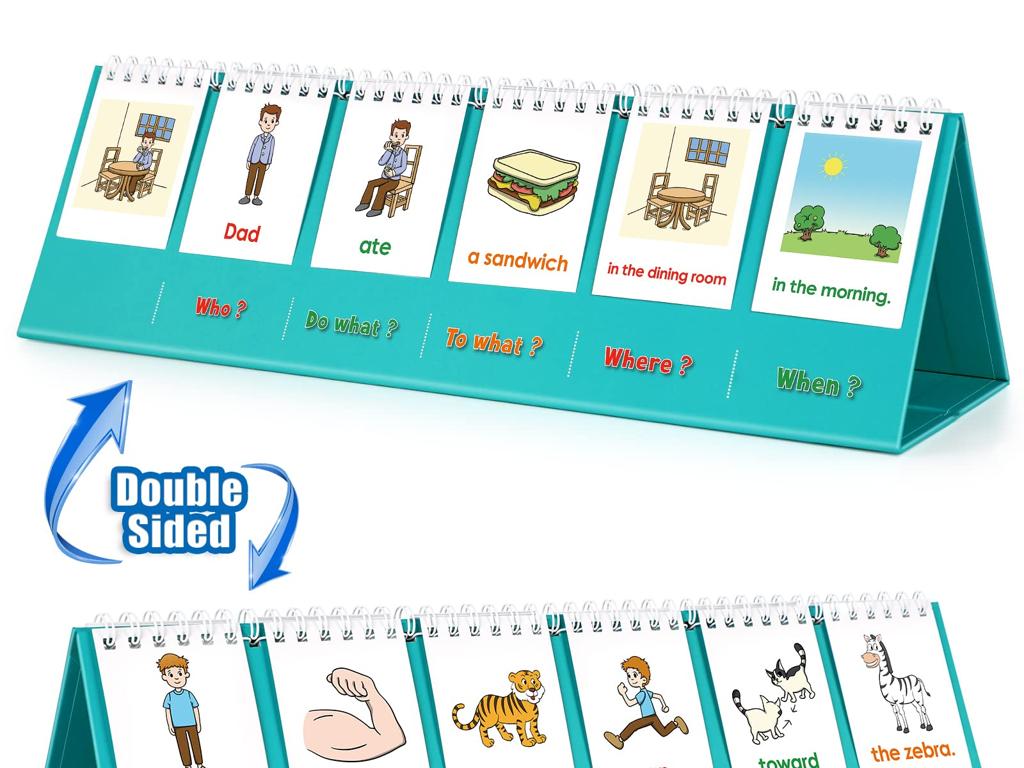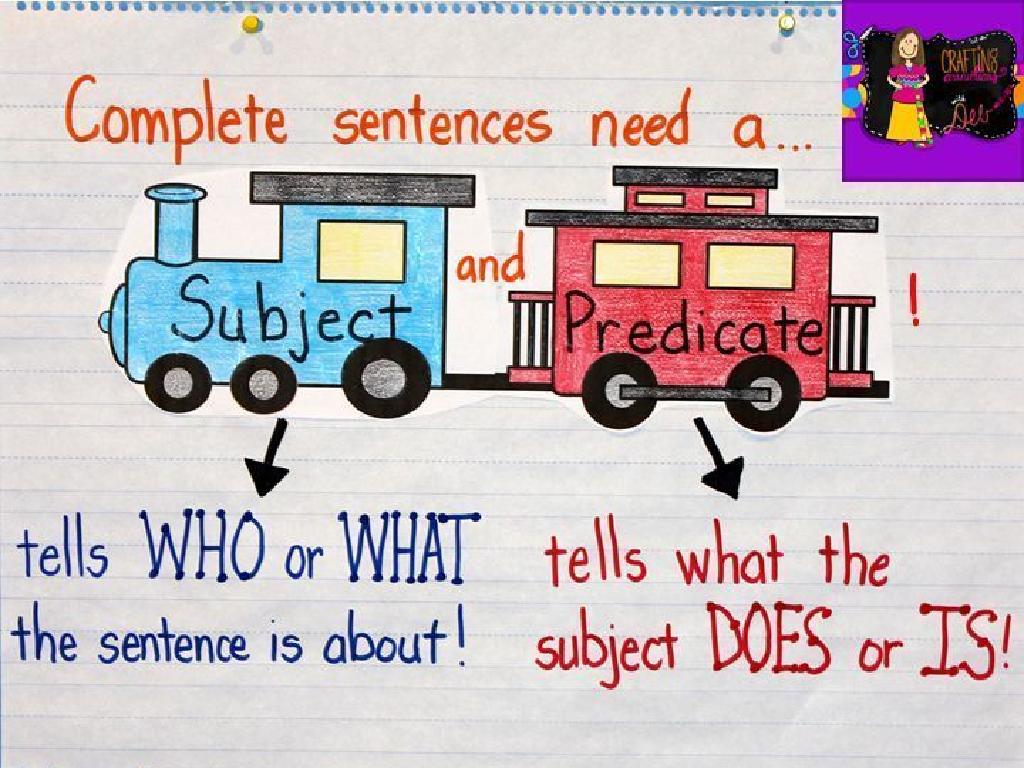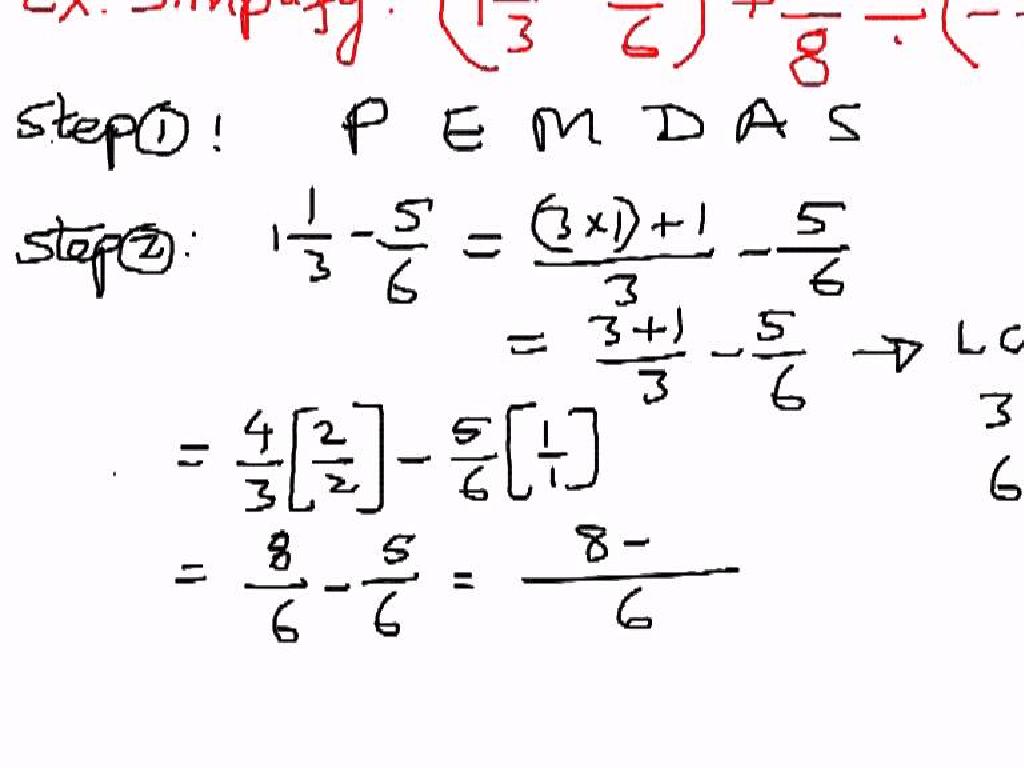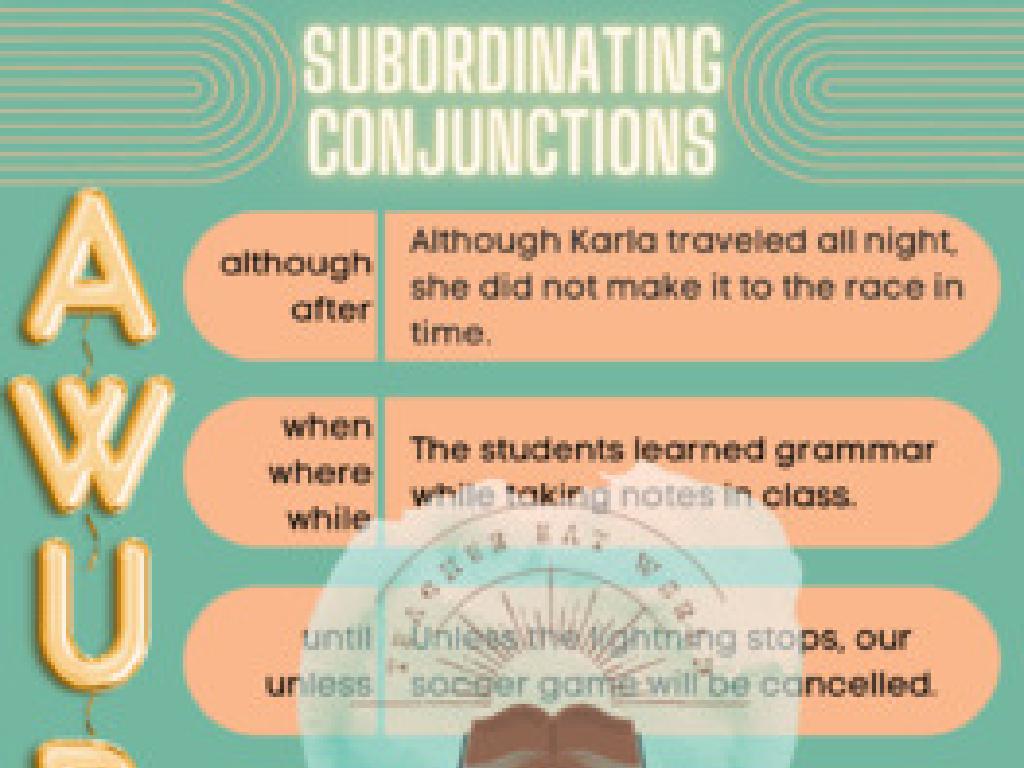Subtracting 7
Subject: Math
Grade: First grade
Topic: Subtraction Up To 20
Please LOG IN to download the presentation. Access is available to registered users only.
View More Content
Welcome to Subtraction!
– Greetings and subtraction intro
– Understanding taking away
– When we subtract, we take away numbers from a group.
– Subtraction is like sharing cookies
– Imagine you have 10 cookies and eat 3, how many are left?
– Practice subtracting 7 from numbers
– Let’s try: 10 – 7, 9 – 7, 8 – 7. How many cookies do you have now?
|
Begin the class with a warm welcome and introduce the concept of subtraction as ‘taking away.’ Use a relatable example, such as cookies, to illustrate subtraction in a way that resonates with first graders. Explain that when we subtract, we find out how many things are left after some are taken away. Use hands-on activities with actual cookies or cookie cutouts to demonstrate subtraction problems, specifically focusing on subtracting the number 7 from various numbers up to 20. Encourage the students to visualize the process and engage with the concept by asking interactive questions. Prepare a set of practice problems for the students to solve individually or in groups, and be ready to assist them as they work through the exercises.
Understanding Subtraction: Taking Away 7
– Subtraction means taking away
– Example: 7 apples minus 1
– If you start with 7 apples and give 1 away, you have 6 left.
– Practice subtracting 7
– We’ll subtract 7 from numbers up to 20.
– How many are left?
– It’s like removing 7 items from a group.
|
This slide introduces the concept of subtraction as ‘taking away’ to first graders, using a relatable example of having 7 apples and giving 1 away. The goal is to help students visualize subtraction in a tangible way. During the lesson, guide the students through several examples of subtracting 7 from different numbers up to 20. Use objects like counters or drawings to help them understand the concept of ‘taking away’ and to find out ‘how many are left’. Encourage the students to use their fingers or manipulatives to practice and reinforce their understanding of subtraction.
Subtracting 7 from 10
– Start with 10 stars
– Take away 7 stars
– How many stars do we have now?
– Count backwards from 10
– This helps us find the answer
– Write the subtraction: 10 – 7 = 3
– This equation shows our subtraction
|
This slide introduces the concept of subtraction by taking away 7 from 10. Begin by visually representing 10 stars on the board and then physically removing 7 stars to show what subtraction looks like. Encourage the students to count backwards from 10 along with you as you remove the stars. This will help them understand that subtraction is essentially counting backwards. Once you’ve reached 3, write the equation on the board and explain that 10 minus 7 equals 3. Make sure to reinforce the concept by asking the students to repeat the equation and the counting process. You can also use other objects like blocks or fingers to further illustrate the concept.
Subtracting 7 from 15
– Starting with 15 blocks
– Taking away 7 blocks
– Imagine 15 blocks, remove 7, how many are left?
– Counting down with fingers
– Use fingers to subtract 7 from 15, one by one
– Writing the equation: 15 – 7 = 8
– 15 minus 7 equals 8, that’s our answer!
|
This slide is aimed at helping first graders understand subtraction by using tangible objects like blocks and their own fingers to visualize the process. Start by asking the students to imagine having 15 blocks and then physically taking 7 away to see what they’re left with. Encourage them to use their fingers to count backwards from 15 to 8, which reinforces the concept of subtraction as ‘taking away.’ Finally, have them write down the equation on paper to connect the action with the mathematical expression. This hands-on approach makes abstract concepts more concrete for young learners.
Subtracting 7 from 20
– Start with 20 balloons
– Imagine 7 balloons pop
– Draw to find the answer
– Use pictures to subtract 7 from 20
– Discover 20 – 7 equals 13
– 20 balloons minus 7 popped equals 13 balloons left
|
This slide is aimed at helping first graders understand subtraction by visualizing a relatable scenario involving balloons. Begin by asking students to imagine having 20 balloons, which is a fun and engaging way to introduce the concept. Then, guide them through a story where 7 balloons unfortunately pop. Encourage the students to draw this out as a visual aid, which reinforces the concept that subtraction is essentially ‘taking away’. By drawing, they can actively see the subtraction process and understand that when we subtract 7 from 20, we are left with 13. This concrete example helps solidify the abstract concept of subtraction in their minds.
Practice Time: Subtracting 7
– Try subtracting 7 on your own
– We’ll solve worksheet problems together
– Use fingers or draw to help subtract
– For example, if you have 10 apples and eat 7, draw 10 apples and cross out 7 to see what’s left.
– Counting backwards makes it easier
– If you have 15 steps and go back 7 steps, count backwards from 15 to find the answer.
|
This slide is designed to engage students in active practice of subtracting 7 from various numbers up to 20. Encourage them to attempt the subtraction on their own first, then move on to solving problems in a worksheet format as a group. Remind them of the different strategies they can use, such as using their fingers to represent numbers, drawing pictures to visualize the subtraction, or counting backwards from a number. These methods will help solidify their understanding of the concept. For the teacher: Prepare a worksheet with a variety of subtraction problems involving the number 7. Monitor the students as they work, offering help and encouragement. After the activity, review the answers as a class to reinforce the learning.
Subtraction Game: Rolling Dice
– Play a game with dice
– Roll and subtract 7
– If you roll an 8, what’s 8 minus 7?
– Find the answer quickly
– Who’s the fastest subtractor?
|
This interactive game is designed to help first graders practice subtracting 7 from numbers up to 20. Provide each student with a dice and have them take turns rolling. After they roll, they should quickly subtract 7 from the number on the dice. This activity not only reinforces their subtraction skills but also encourages quick mental math. Monitor the students as they play and offer guidance if they struggle with the concept. To extend the activity, consider pairing students up for a friendly competition or having different levels of difficulty by using dice with numbers higher than 6 for advanced students.
Class Activity: Subtraction Story
– Create your subtraction story
– Start with 20 items
– Subtract 7 items
– Share your story and subtraction
– For example, ‘I had 20 apples and gave 7 away. Now I have 13 apples.’
|
This activity is designed to help students understand subtraction in a fun and interactive way. Encourage them to visualize and create a story involving 20 items of their choice, from which they subtract 7. It could be toys, candies, or even storybook characters. After crafting their stories, they will share with the class how they subtracted 7 from 20, demonstrating their understanding of the concept. For the teacher: Prepare to guide the students through their subtraction, ensuring they grasp the concept of ‘taking away’. Offer assistance in forming their stories if needed. Possible variations of the activity could include using physical objects to represent the items in their stories, drawing pictures to illustrate the subtraction, or even acting out the story. The goal is to make the concept of subtraction tangible and relatable.
Review and Goodbye!
– Recap: Subtracting 7
– We learned how to take away 7 from numbers up to 20.
– How to subtract 7 from a number?
– Take the number, count back 7 steps to get the answer.
– Great work today, class!
– Looking forward to next time!
|
This slide is meant to wrap up the lesson on subtracting 7. Start by asking the students what they learned to reinforce their understanding. Encourage them to explain the process of subtracting 7 in their own words to assess comprehension. Praise their efforts and progress to build confidence. Let them know you’re excited to see them in the next class and encourage them to practice at home. For the next class, prepare a set of simple subtraction problems for them to solve as a warm-up activity.






